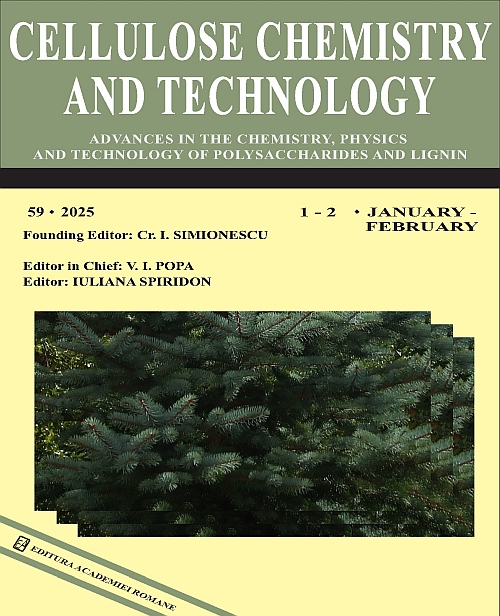|
Title
Evaluation of chemomechanical methods for extracting cellulose from waste cabbage (Brassica oleracea var. capitata L.) trimmings
Authors
LORELI FAYE T. MANZANO, CHRISTINE JOY D. MAPATAC, JOHN MARK G.
BEGSAENG, HAZEL ANN S. NIPALES and DAPHNE C. LEAL
Received
July 4, 2024
Published
Volume 59 Issue 1-2 January-February
Keywords
cellulose extraction, cellulose yield, cellulose purity, α-cellulose, hemicellulose, lignin
Abstract
This study investigates the cellulose yield and purity of waste cabbage (Brassica oleracea var. capitata L.) trimmings
obtained through three extraction methods: (a) alkali hydrolysis and bleaching treatment with high shear
homogenization (AHBH), (b) alkali hydrolysis with ultrasonication (AHU), and (c) chemical extraction with
mechanical assistance (CEMA). The cellulose yield varied significantly among the methods, with AHBH yielding the
highest at 7.11%, followed by CEMA at 6.56%, and AHU at the lowest at 5.08%. Analysis of α-cellulose content
revealed AHU's purity at 63%, attributed to acid hydrolysis and sonication facilitating higher α-cellulose purity. In
contrast, AHBH and CEMA exhibited lower purity at 58% and 55%, respectively. Morphological analysis indicated
distinct characteristics for each method: alkaline treatment in AHBH caused disintegration of cellulose fibers, AHU's
ultrasonication led to fibrillation, and CEMA displayed densely packed irregular fibers, suggesting potential residual
hemicelluloses and lignin. These findings highlight the significant impact of extraction techniques on cellulose yield,
purity, and structure.
Link
https://doi.org/10.35812/CelluloseChemTechnol.2025.59.04
|



